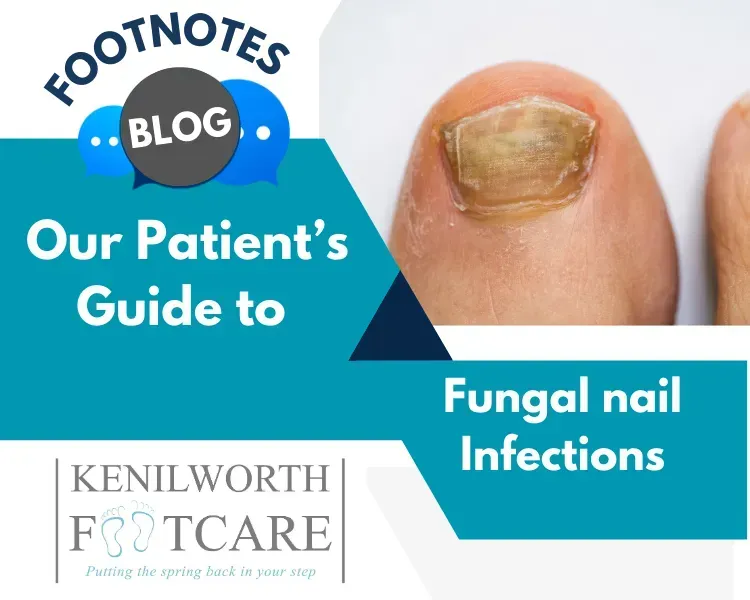
Complete Guide to Fungal Nail Treatments: 4 Professional Solutions | Kenilworth Footcare
Understanding Fungal Nail Infections: Expert Treatment Guide
What is a Fungal Nail Infection?
Onychomycosis (fungal nail infection) occurs when fungi invade the nail, causing visible changes and potential discomfort. While both fingernails and toenails can be affected, toenail infections are most common.
Identifying Fungal Nail Infections
Key symptoms include:
• Nail discoloration (yellow, brown, white)
• Nail thickening
• Crumbly or ragged edges
• Shape distortion
• Unpleasant odor
• Nail separation
Common Causes and Risk Factors
• Public wet areas exposure
• Tight, non-breathable footwear
• Previous nail trauma
• Compromised immune system
• Underlying health conditions
• Poor circulation
Professional Diagnosis at Kenilworth Footcare
We offer:
• 5-minute diagnostic testing
• Professional assessment
• Expert consultation
• Accurate results
• Treatment planning
Advanced Treatment Options
1. K-Laser Treatment
• Safe and painless procedure
• No recovery time needed
• Multiple toe treatment possible
• Consistent treatment schedule
• Proven effectiveness
2. Lacuna Technique
• Micro-drilling procedure
• Enhanced medication penetration
• Precise application
• Targeted treatment
• Improved absorption
3. Chemical Ablation
• Professional-grade solutions
• Controlled application
• Gradual nail removal
• Targeted treatment
• Monitored progress
4. Topical Treatments
• Professional-grade products
• Home care guidance
• Regular monitoring
• Combined therapy options
• Prevention strategies
Home Care Guidance
Essential tips to enhance your treatment and prevent cross-infection:
• Proper nail hygiene
• Footwear hygiene
• Skin care and treatment
• Regular monitoring
Book Your Fungal Nail Assessment
Contact Kenilworth Footcare:
• Call: 01926 563555
• Visit: 2 Oaks Precinct, Kenilworth CV8 1DP
• Book Online: www.kenilworthfootcare.co.uk
Treatment Success
• Customized treatment plans
• Regular progress monitoring
• Before/after documentation
• Long-term prevention strategies




